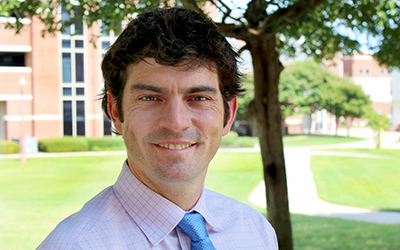The story of Jesus is the decisive self-revelation of God; accordingly, the canonical Gospels, each distinctive, has priority. Gospel primacy does not require an abdication of holistic critical consciousness, for the postmodern interpreter has a reflective commitment to the scriptures, contrary to a naïve precritical literalism or to modern “historical-critical” reductionism…
Second Naiveté
 In the second naiveté the interpreter “adopts provisionally the motivations and intentions of the believing soul. [She] does not feel them in their first naiveté, but ‘re-feels’ the in a neutralized mode, the mode ‘as if.'” It is a re-enactment with sympathetic consciousness. The interpreter suspends critical judgment and “re-reads” the text in naïve innocence, but rereading with a non-critical posture never corresponds exactly to reading in narrative innocence. Subsequently, the postmodern reader reactivates her critical consciousness — from subservience in the background — and attempts to account conceptually for the possibility of living in the symbols o the believer’s world. Since the symbols indigenous to the world of the narrative cannot be abstracted from it, reading “as if” in the second naiveté enables the interpreter to appropriate the biblical symbol and the new possibility embedded in the narrative. Only the retrieved symbol and the new possibility embedded for living in the modern world, which is inaccessible apart from reading with the second naiveté. However, she cannot literally “suspend” critical judgment to reread the story, for only “the double reading” of the narrative with critical analysis intentionally subdued permits a literal reading. She remains aware of the problems identified earlier but reads with genuine openness to a literal interpretation to enable her to discern its intrinsic symbols. Thus bracketing out critical consciousness requires a double reading of the text with critical analysis held in the background but still alert to difficulties.
In the second naiveté the interpreter “adopts provisionally the motivations and intentions of the believing soul. [She] does not feel them in their first naiveté, but ‘re-feels’ the in a neutralized mode, the mode ‘as if.'” It is a re-enactment with sympathetic consciousness. The interpreter suspends critical judgment and “re-reads” the text in naïve innocence, but rereading with a non-critical posture never corresponds exactly to reading in narrative innocence. Subsequently, the postmodern reader reactivates her critical consciousness — from subservience in the background — and attempts to account conceptually for the possibility of living in the symbols o the believer’s world. Since the symbols indigenous to the world of the narrative cannot be abstracted from it, reading “as if” in the second naiveté enables the interpreter to appropriate the biblical symbol and the new possibility embedded in the narrative. Only the retrieved symbol and the new possibility embedded for living in the modern world, which is inaccessible apart from reading with the second naiveté. However, she cannot literally “suspend” critical judgment to reread the story, for only “the double reading” of the narrative with critical analysis intentionally subdued permits a literal reading. She remains aware of the problems identified earlier but reads with genuine openness to a literal interpretation to enable her to discern its intrinsic symbols. Thus bracketing out critical consciousness requires a double reading of the text with critical analysis held in the background but still alert to difficulties.
The Priority of the Biblical Story
Narrative theology essentially affirms the priority of the biblical story in its irreducibility and unrepeatability. Hence, the interpreter does not find her story in a biblical story that can “use” for illumination. Otherwise, the priority of her story encircles and comprehends the scriptural story, elevating her story above the biblical story. [This is the mistake of Bultmann, sometimes Tillich, and other modern readers in my view.] Rather, narrative theology intrinsically affirms the priority of the Biblical Story over the interpreter’s story: When the reader encounters an illuminating story, she relocates her story inside the biblical story, and it becomes the interpretive context for understanding her “story.” The creative act of “living in the Biblical Story” enables her to participate in its narrative world…
Participatory narrative interpretation recognizes the similarities and differences in the narrative world of the story of Jesus and the modern world of the interpreter, which involves translating the perspective and conceptualization “from the biblical world” into “the idiom of the postmodern world.” Beyond the literary, historical, and conceptual dissonance between the biblical world and the contemporary world of lived experience, therefore, the essentials of a biblical worldview must be distinguished from the relative elements in the ancient biblical worldpicture…
The changing worldpicture not only applies to the new scientific understanding of the human situation, but also to the plausibility of thee interpretation of historical traditions of antiquity. These historical traditions require a [I would say sometimes] nonliteral interpretation with a discerning critical consciousness in assessing their historical character. Nevertheless, the relativizing of the ancient worldpicture does not exclude but allows for a particular worldview — a perspective on reality shaped through the self-disclosure of God. Yet the changes in the modern worldpicture inevitably impact the configuration of a Christian worldview, for it must take into account postmodern scientific explanations to clarify “how” the world operates. Since the first naiveté fails to distinguish worldpicture and worldview, the breakdown of the first naivete requires adaptation to the radical differences between the archaic biblical worldpicture and the essentials of the biblical worldview accessible through the second naiveté. Contrary to the premodern and modern scientific interpretation, the biblical worldview can transcend the worldpicture of biblical antiquity. The relative biblical worldpicture must not be confused with, but distinguished from, an enduring biblical worldview.





Recent Comments
MegaMAGAloveUSA!
"Lord God Almighty, please let us Christians wake up with empathy, compassion and ..."
MegaMAGAloveUSA!
"Thank you. Trying to learn a way through this all. CHRISTIANS ..."
Deb
"Thank you for this important critique of JHY's theology of the cross lived ..."
ReaderV
"There is no doubt abortion is tragic . I don't believe anyone ever ..."
Sandra
"Wow!!! I love this guy! Peacemaking is so dear to my ..."